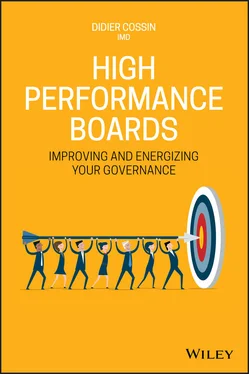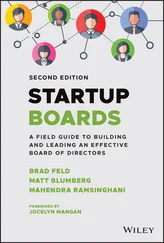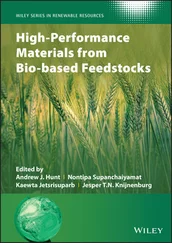1 Cover
2 About the Author About the Author Didier Cossin is professor of governance at IMD, Switzerland. He is the founder and director of the IMD Global Board Center, the originator of the Four Pillars of Board Effectiveness methodology and an advocate of Stewardship. Prof. Cossin works with sovereign wealth funds, large corporations, non-profit organisations, families and institutional investors on governance and stewardship issues. He is an advisor to central banks, regulators and international organizations across the world. He is the author of other books such as Inspiring Stewardship, book chapters (such as Governance Risk: A Guide for Investors) and articles in the fields of governance, investments, risks and stewardship. He is also principal author of a proprietary methodology of investment selection on governance that is used in financial markets. Prof. Cossin holds a PhD in Business Economics from Harvard University (Robert C. Merton chair), is a former Fulbright Scholar from the Massachusetts Institute of Technology and is a graduate from ENS, rue d’Ulm, Paris as well as of Sorbonne University and EHESS.
3 Acknowledgements Acknowledgements Many have contributed, directly and indirectly, to my work and to this book. Of those that contributed directly, I am particularly indebted to Sophie Coughlan and Abraham HongZe Lu. Both Sophie and Abraham have helped me directly in my practice and shaped several of the chapters of this book. This book would not be there without their contribution. I am also grateful for the many others that contributed to this work: Quentin Dufresne, Francesca Vitucci, Julie Poivey, Martin Kralik, Richard Eames. And for a personal collaboration that has addressed many of the issues hereby described, Loic Frank. Of those that contributed indirectly, I owe a particular debt to the real actors of the governance world, board members, directors, government officials, investors, that have peopled my words and my ideas, for the better or for the worse! They probably are just as happy to not see their name mentioned here, as a chair of one of the largest financial institutions in the world wryly remarked once: “Being in Didier’s writings tells you it’s time to go!”. I suppose that my critical eye has helped a few towards self-awareness J. For many though, they have been an inspiration of how to drive true governance, and many of them are chairpeople or board members of influential and powerful organizations. I am grateful for all those who shared intimate and confidential situations that make the reality of good and bad governance. Without them, I could not contribute to governance improvements that I know impact the world for the better (and sometimes dramatically and publicly so). The dedication, integrity, and altruism of many is commandable. Some are famous, some are unknown, and all support us towards a better governed world. And indeed I have rarely met individuals that did not want to do better, in all senses of the word better. We, as society, should always support the development and improvement of those that govern us and our organisations, and I hope that through my words, their contribution will be heightened. I am in many ways a go-between, putting in words and concepts what the very best-in-class are naturally doing. This book is simply a mapping and synthetization of what some gifted and dedicated individuals have endeavored to bring to society through their personal judgement skills.
4 Preface
5 Part I: The Four Pillars of Board Effectiveness Chapter 1: The Four Pillars of Board Effectiveness The First Pillar: People Quality, Focus, and Dedication The Second Pillar: Information Architecture The Third Pillar: Structures and Processes The Fourth Pillar: Group Dynamics and Board Culture Chapter 2: Governance Challenges around the World Scientific Lessons from Natural Selection What is Transformational Leadership? Should We Trust Leaders? The Governance DNA Notes Chapter 3: The Successful Director: Values and Character Duty of Care Duty of Loyalty Integrity: A Key Characteristic of Board Directors Note Chapter 4: The First Pillar: People Quality, Focus, and Dedication Quality Focus Dedication Notes Chapter 5: The Second Pillar: Information Architecture How Complete is Your Information? Chapter 6: Board Structures and Processes Processes Committee Structure Board Secretary Lead Director or Vice Chair Notes Chapter 7: Group Dynamics and Board Culture Understanding Group Dynamics Coalitions Within a Board Are Inevitable – and they Feed into Politics Boards Fall into Traps3 Drawing Strength from the Board's Potential Developing Self-Awareness Board Culture Notes
6 Part II: Board Failures and Challenges Chapter 8: Four Areas of Board Failure Chapter 9: Risks and Ensuring the Right Board Risk-Philosophy Note Chapter 10: A Board Member's Practical Guide to Risk Thinking The Physical Health Check: Technical Risks The Mental Health Check: Behaviours The Strategic Risk Check The Governance Risk Check Note Chapter 11: Elements of Advanced Risk Techniques for Board Members: From Quants to Cyber The Why and How of Quantitative Risk Assessment for Boards Integration of Risks The Outcome of Risk Assessment Cyber Risk Notes Chapter 12: Crisis Management Crisis as a Turning Point There is Work to Be Done In Peaceful Times Communication Principles Another Powerful Weapon: Gathering Information A Crisis Will Shed Light On Boardroom Fissures Procedure vs. Authenticity Communicate Your Way to Rebuilding Trust Notes Chapter 13: The Four Tiers of Conflicts of Interest1 Tier-I Conflicts: Individual Directors vs. Company Tier-II Conflicts: Directors vs. Stakeholders Tier-III Conflicts: Stakeholders vs. Other Stakeholders Conflicts of Interest within a Group of Stakeholders Tier-IV Conflicts: Company vs. Society Notes Chapter 14: High-Level Fraud and Active Board Oversight Why Does High-Level Fraud Happen? Injustice Lax Oversight Problematic Culture Financial Illiteracy How to Create an Effective Oversight Environment Preventing Injustice: Broaden the Notion of Conflict of Interest Preventing Lax Oversight: Build Appropriate Frameworks Preventing Toxic Behaviours: Create a Positive Culture Strengthen Board Oversight Expertise with Special Focus on Legal, Compliance, Risk, Fraud, and Financial Reporting Tools For Anti-Fraud Activities: Assessment, Prevention, Detection, and Investigation Assessment Prevention Detection Investigation Notes
7 Part III: Board Best Practices Chapter 15: The Board as a Strategic Asset1 Five Definitions of Strategy Clarifying the Board's Role Taking Context into the Mapping Process The Impact of Context on Strategic Views and Roles of the Board The Board's Ultimate Strategic Significance Notes Chapter 16: A Primer on Finance Essentials for Directors Reading Financial Reports Understanding Ratios to Analyse Operating Strategies Interpreting Between the Lines of Financial Statements How to Identify Red Flags in Financial Statements Implementing Desired Capital Structure Understanding Valuation Fundamentals Making Better M&A Decisions1 Overseeing Risk2 Notes
8 Joanne Marker and Board Values at Comfre Chapter 17: Board Leadership and Values Quality Boards Live and Breathe Integrity Which and Whose Values? Board Values vs. Organisational Values Family Values in Business Note Chapter 18: The Intricacies of Subsidiary/Holding Governance Structures Culture Chapter 19: Fostering Entrepreneurship from the Board1 ‘Best Practice’ Governance vs. Entrepreneurship Boards Should Actively Encourage Entrepreneurship Notes Chapter 20: The Board's Oversight Framework for M&As1 Creating a Deal-Making Mindset Seeing the Bigger Picture Staging Deals with Maximum Precision Integration Confronting Litigation Involving M&As Notes
9 Joanne Marker Confronts Failing Board Culture Chapter 21: The Chair–CEO Relationship The Role of the Chair Chairs are Increasingly Active Chair–CEO Dynamics – the Hallmarks of a Productive Relationship Tests of the Chair–CEO Relationship The Ideal Attributes of a Chair Chapter 22: The Board–Management Relationship Supervision Support Blurring the Board–Management Relationship Writing Governance Codes Is Easier Than Changing Behaviours Note Chapter 23: Effective DiversityDiversity is Good … But Why; and When? Diversity as a Considered Choice Gender Culture Personality Age Social Background We Have Embraced Diversity … Now What? The Chair's Role in Building and Nurturing Diversity Notes Chapter 24: The Talent Pipeline The Board's Responsibility for Talent Management The New Talent Dynamic: Culture, Values, Community Notes Chapter 25: Boards and Social Media1 JP Morgan's Failed Foray into Twitter Q&A Why Boards Should Understand Social Media What Boards Should Do Notes Chapter 26: Boards and Investors The Move toward Increasing Shareholder Engagement Note Chapter 27: Managing Stakeholders Shareholders vs.
Читать дальше












